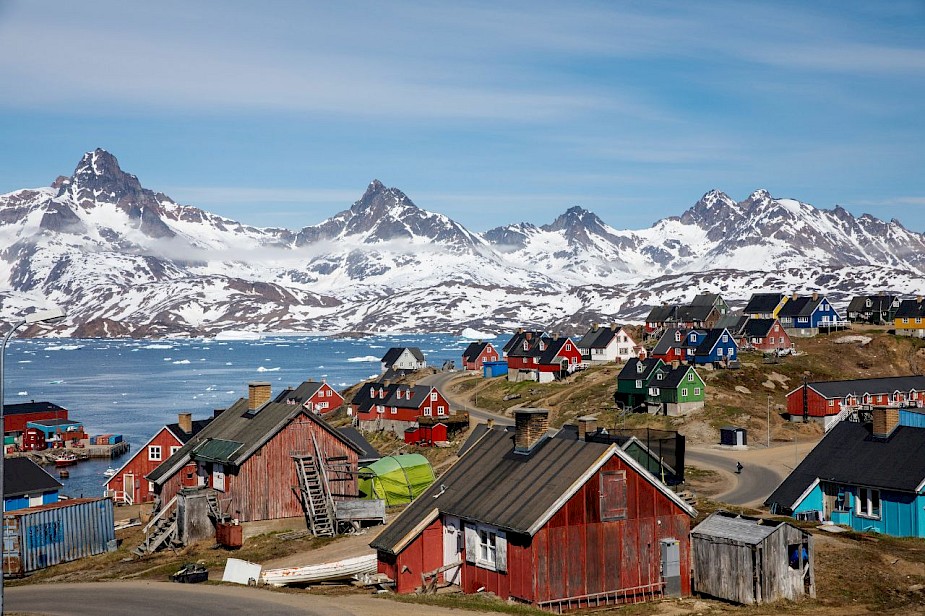Climate change is pushing Greenland over the edge

Matthew Osman stands atop an ice cap in western Greenland looking out over the Nuussuaq Peninsula. In the distance and more than 2,000 meters below, the village of Ilulissat is a tiny speck in the vast expanse of snow and ice. As Osman steps into the snow, he sinks into a crevasse up to his thigh. Carefully easing his way out, he’s reminded of the hazards of working on ice. Like others who have ventured to drill into Greenland’s ice, Osman and his colleagues are braving the dangers to search for clues as to how the climate has changed in the past, and, by extension, how it may change in the future. What they’ve found is an unexpected sign of just how acute ongoing climate change really is.
The research team led by Osman, a geoscientist at the University of Arizona, came to Greenland to extract a 140-meter-long ice core. This core stretches nearly to bedrock and, in the gases and chemicals housed within, holds evidence of climate change over the past 2,000 years. Their analysis of the core shows that in this place during the Medieval Warm Period, a roughly 400-year phase of higher global temperatures around 1,000 years ago, the ice was growing thicker and advancing—the opposite of what it’s doing today.
Previously, scientists assumed that ice’s advance during the Medieval Warm Period was evidence that Greenland’s western coast was subjected to paradoxically colder conditions during the otherwise toasty era. But Osman and his teams’ results show that the ice cap was growing because it was warmer. Higher temperatures, Osman says, caused more evaporation that led to more snowfall. “This is really surprising and not how you would expect an ice cap to respond during a warmer period,” he says.
Rising temperatures during the Medieval Warm Period would have caused the wind to pick up more moisture from the ocean and drop more snowfall along the coast. But whether ice grows thicker and advances also depends on how much more ice melts because of the warmer weather. During the Medieval Warm Period, summer melting did increase, Osman says, but the increased snowfall won out in the end and the ice grew.
The study shows the complexity of a warming climate system, says Anais Orsi, a polar scientist at the University of British Columbia who was not involved with the study. With the right conditions, “you can have warming and ice advance at the same time.”
Today, however, pushed by anthropogenic climate change, the ice caps and glaciers along the west coast of Greenland, as in most other places, are rapidly retreating.
The contrast makes the implication easy to see: “Our summer warming is unprecedented,” says Orsi. “Our summer warming is larger than during the Medieval Warm Period.”
“We are definitely entering the surprise mode of climate change,” she adds.
“This is an alarming sign that we have tipped the scale on how this aspect of the climate system fundamentally responds to warming,” says Osman.
You can return to the main Market News page, or press the Back button on your browser.

